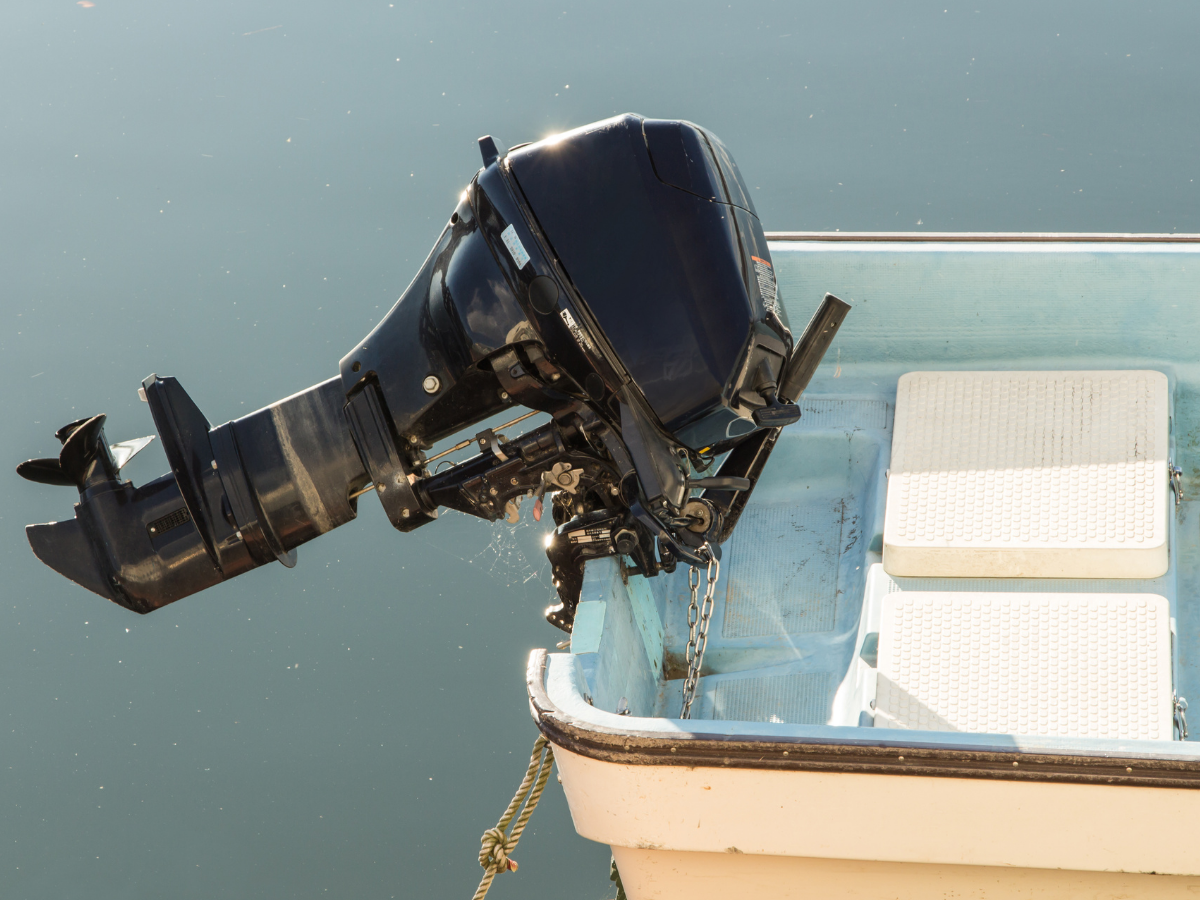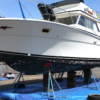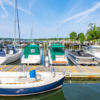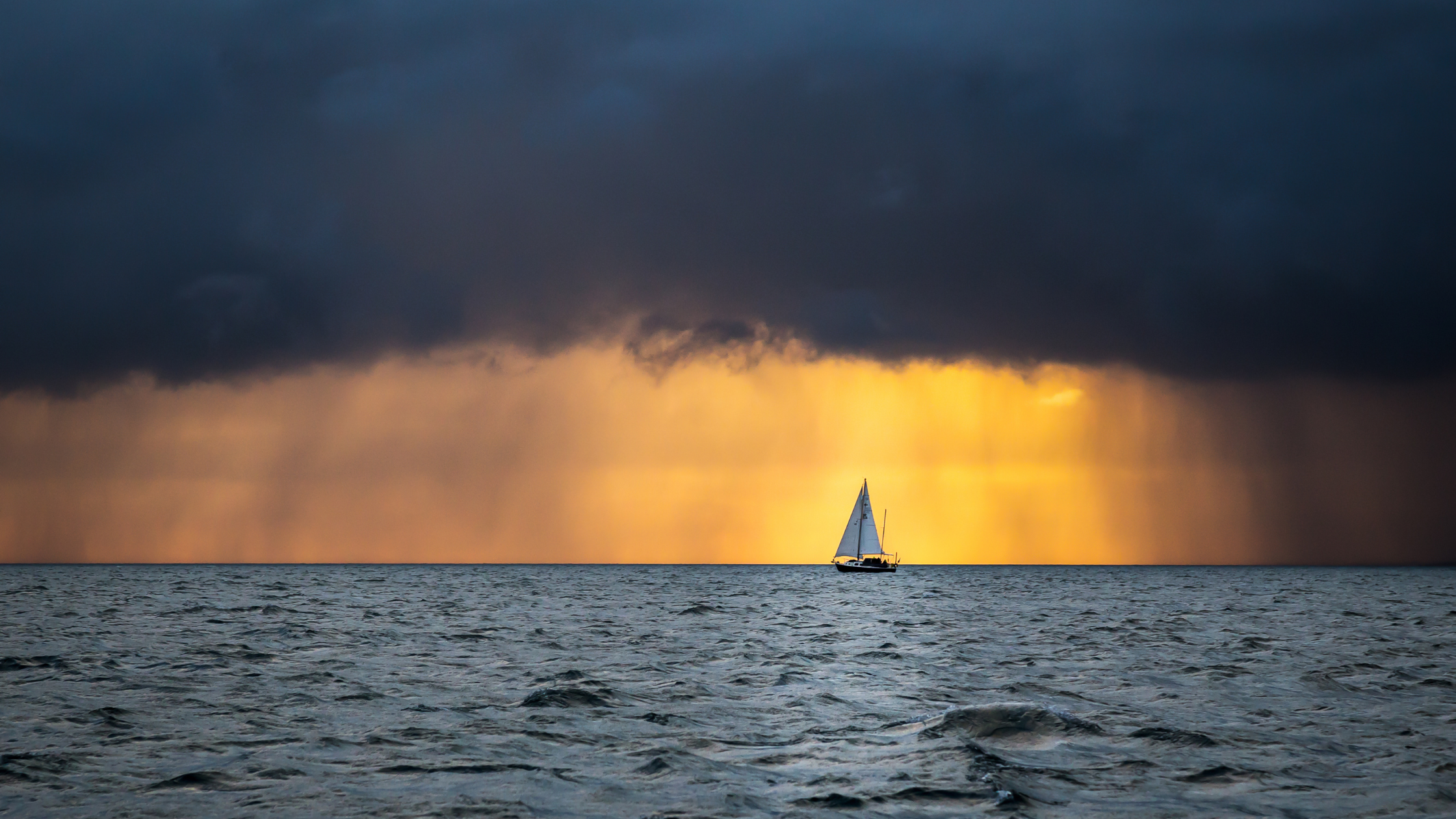
Most boat owners know that if a hurricane is in the forecast, it’s time to batten down the hatches! Because an unsecured boat can be severely damaged during a hurricane, or tropical storm. A storm often brings with it high winds, torrential rain, damaging waves, and powerful surges. That’s why having a plan in place ahead of time for protecting your beloved boat will keep it as safe as possible.
Starting early is key, since named storms often start coming in even before the season officially begins. Although hurricanes are a major threat to boats, a few simple precautions can prevent damage and ease a boat owner’s mind. Every responsible boat owner should learn what to do to protect their boat, and do it. Here are a few fairly easy but important steps to take.
If you store your boat on a trailer or blocked on land
- Remove the hull drain plug and make sure your boat’s bow is at a higher angle than its stern.
- Take out all loose items from the interior cockpit and bilge – creating a clear path for rainwater to drain from the hull.
- Take down all canvas, isinglass, or Bimini tops from the exterior – they can act as sails in high winds, or fly off the boat.
- Along the same line, tie down or remove anything that could catch the wind.
- Remove any loose personal items and electronics – this includes soft items like cushions, bedding, and clothing.
- Take out, and store in a safe place, your ownership documents.
- Protect your boat’s interior by using a tight-fitting mooring cover or a custom storage cover.
- Make sure your boat’s batteries are fully charged and your bilge pump is operational – including its auto-float switch. This will help remove any water that enters the hull if there’s a blockage to the drain plug’s path.
- Lastly, tie your boat and/or trailer to the ground to protect it from wind or moving water. Your marina management team should be able to help you with this.
If you store your boat on the water
- Follow all the same steps as above – remove personal items, loose equipment, canvas, and isinglass windows. The exception to this would be if your boat doesn’t have a self-bailing cockpit. If that’s the case, keep the canvas on.
- Ask if your marina will allow you to keep your boat plugged into shore power during the storm – this holds batteries at full charge and keeps the bilge pump operational. If you can’t, make sure your batteries are fully charged and your bilge pump’s auto-float switch is working properly.
- Inspect all dock lines and knots. Replace any lines that are short or show any wear at all. You should use up to three times more line than normal, leaving slack in the lines to account for the extra pull during storm surge. If you have to replace lines, it’s a good idea to go up a size. And while you’re at it, check for any lines that are rubbing against a sharp angle – they can quickly wear through and break during a storm.
- Additional spring lines and bumpers are a very good idea – to prevent damage from your boat banging against the dock.
- Never store your boat on a lift during a hurricane or major storm. If you can, take it to ground storage. If you can’t get your boat on land before the storm, follow all of the steps above, and set your lift to its highest position.
If you have time to move your boat
The very best way to keep your boat safe when a hurricane is approaching, is to move it out of the storm’s path. So, if that’s an option, as soon as you hear a storm warning or watch, talk with your marina’s management team and see what they recommend for pre-storm preparation. They’ll know the water, and the area, better than anyone and can give the most knowledgeable advice. And it goes without saying, but we’ll say it anyway, it’s best if you can move your boat early when the weather is still fair.
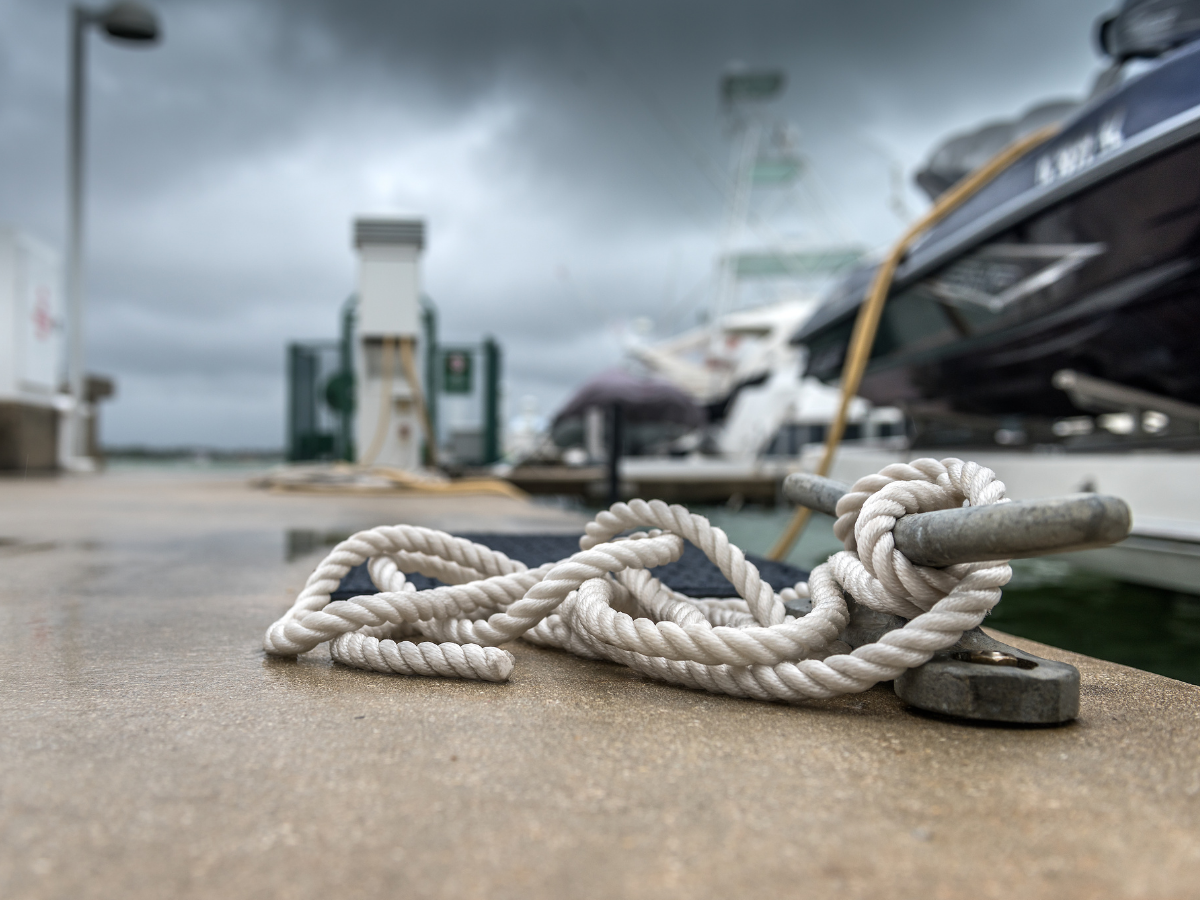
What to do after the storm has passed
Once the storm has entirely left your area, that’s the time to make your way to your boat to inspect for damage. Ideally, it will not have sustained any. However, even if there is no visible sign of damage, you should dry all interior areas that took on water as soon as possible – especially if water entered the bilge. Arguably, the most important and most expensive parts of your boat are located in its lowest point – the engine, outdrive, or other mechanical systems. If you suspect any water made its way down there, get these systems inspected by a professional immediately to lessen any damage.
